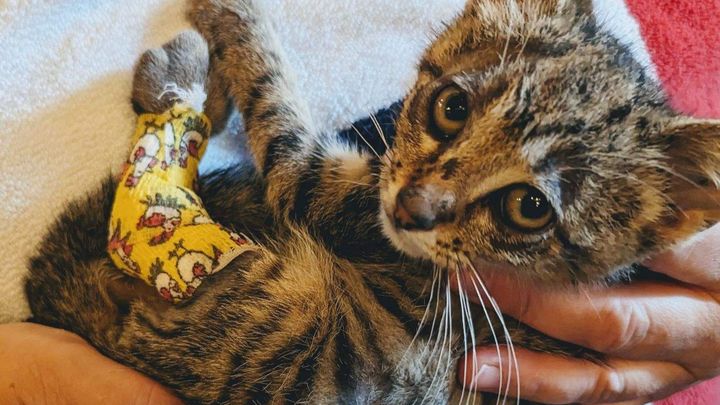
FIGHT FOR THE FERALS
Donation protected
Ten years ago I knew little about feral cats; but then, the economic downturn left numerous houses empty in my neighborhood allowing feral cats to move in and multiply exponentially. That spring, the yards in my neighborhood were dotted with multicolored flowers, and multicolored cats and kittens. Quite surprisingly,I soon found out how vicious my otherwise civil neighbors would become when confronted with these mostly unwanted felines.Some put down barbed wire to keep the cats from their yards, others put down poison, and there was a campaign to collect the kittens and dump them elsewhere. Anything they could do to get rid of the cats. I also learned how my neighbors aggressive behavior was not just for the cats but towards anyone who opposed their plans to rid the neighborhood of the cats.
I started my own campaign to try and find how I could help the cats. I discovered unfortunately that there was little help to be had. Even if the no-kill shelters hadn't been filled, they didn't want feral cats or kittens unless they were socialized enough to be adoptable. And they did not want black cats or kittens at all because people tended not to adopt them. And forget The Humane Society which euthanized the majority of cats brought to them. I even tried locating people in rural area with barns only to find that cats were frequently dumped at their doorsteps by people thinking the cats could magically survive in the country.
I did learn about the Trap-Neuter-Release program which wasn't perfect, and took time to be effective, but did eventually have positive effects. And it took time, and money trying to accomplish this under the watchful eyes of unfriendly neighbors. But eventually, at least my immediate neighborhood became stable. It also helped as others who cared for the cats became more emboldened to speak up to the bullies. The haters are still there, but not as dominant.
In my fight for the feral cats, I became acquainted with a small group of individuals who had banned together to help several colonies of cats in nearby neighborhoods. All of these colonies were located behind businesses and had around twelve felines -- those numbers soon to be growing if something wasn't done. This group was busy trapping the cats to get them fixed, helping them to get adopted if possible, and overseeing the ones who would be returning with daily food, medical care, and shelters for the winter. They introduced me to two organizations: Planned Pethood which would give vouchers to get the cats fixed for free; and Humane Ohio which would accept the vouchers to spay and neuter the cats. I helped out this group several days a week, and when needed.
Then in April of 2019, I woke one day to find myself the only one left in the group to help these colonies. Two had just gotten jobs, one had moved out west, and the fourth had suddenly died in her sleep. It left me with a major decision -- did I continue helping the colonies or walk away. I decided to do what I could. There were a few people who came out once a week to help, but I knew they would not keep doing so forever. I vowed to keep going as long as I could.
And then the miracle.
In my personal life, I had just recently reconnected with someone I had gone with in college fifty years before, and we had decided to get married - in our 70's. He came from out west to live in Toledo with me. I knew he liked cats, but I doubted he would participate in my daily tasks of helping the colonies. I was wrong! He has become my partner, not only in marriage, but in my fight for the feral cats. We go out every single day of the year and in every weather condition to help these colonies. Sometimes the colonies are stable, but at other times new cats or kittens show up or are dumped and need our help.
At the moment, one of the colonies is in a dire condition! During the winter when Humane Ohio does not do TNR, two kitten showed up one day. We had to wait until the weather broke to get them fixed. Just as the weather turned warmer, my husband had a stroke and I broke my arm. With him in and out of the hospital, I still managed to get to the colonies every day to feed them, but could not do the TNR. By the time we were able to do so, the two kittens had blossomed into five cats with nine more kittens. We have managed to get the adult cats fixed, but are now working on the kittens. The kittens, if social, will be placed up for adoption. If not, they will be taken to a protected sanctuary in a rural area. But first they have to be neutered or spayed. Besides our health issues, this has all been more difficult because they are down to only one veterinarian at Humane Ohio so appointments are difficult to get.
In the meantime, we are feeding all these mouths out of our pockets. (About $1500 per month). With inflation, it is difficult enough to have enough money for food for the cats. Now with their larger numbers, it is becoming almost impossible. I know many of the cats are not getting enough to eat. With winter coming up, we will be hard pressed to supply shelters.
We really need all the help we can get to help with this critical situation and to be able to continue our work to fight for the ferals.
Organizer
PATRICIA DONATELLI
Organizer
Toledo, OH